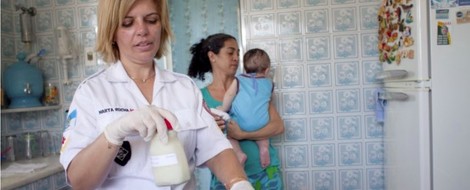Your podcast discovery platform
Curious minds select the most fascinating podcasts from around the world. Discover hand-piqd audio recommendations on your favorite topics.

piqer for: Global finds Doing Good
Marie von Hafften is a 2018 Story Fellow with the Solutions Journalism Network, curating reporting on responses to social problems. She also writes The Response, the organization's weekly newsletter. Marie studied international affairs and public policy at Columbia University and has worked for UN Women, UNOCHA and KYRS-Thin Air Community Radio. Her writing and photography have been published by PRI/GlobalPost, Christian Science Monitor, Next Billion and Global Envision.
The Surprisingly Simple Way To Save Babies’ Lives
Breast milk helps newborns and infants develop healthy immune systems. However, not all mothers can nurse their babies immediately or at all, because of maternal illness, death or other factors. Take preterm newborns, for example. The benefits of breast milk are particularly strong for these and other vulnerable children, but many preemie mothers are not able to produce milk right away.
Brazil is the world’s leader in tackling this problem. Policymakers, pediatricians, firefighters and even soap opera stars have teamed up with nursing mothers to help babies get the breast milk they need. The key? Milk banks.
Milk banks operate much like a blood bank — staff screen potential donors for diseases and pasteurize the milk before distributing to patients.
In 2015 alone, more than 170,000 Brazilian babies received donated breast milk. The work is helping to improve health outcomes. Child mortality in the country has fallen 73 percent between 1990 and 2013.
Home to more than 220 of the world’s 292 milk banks, Brazil offers a road map for other countries looking for effective ways to improve child health.
Making breast milk available to babies in need could save the lives of more than 800,000 children every year. The long-term economic benefits could be as high as $300 billion in health care costs for vulnerable infants.
In this story, Melody Schreiber explains why Brazil’s milk banks have been so successful. She uncovers valuable lessons, including how the milk bank concept was marketed to potential donors, how Brazil created a simple and easy donation system, and the cost-saving measures that helped make the innovation much more affordable to implement.
